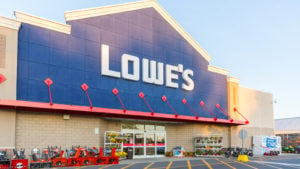The bear market has not been limited to a group of high-flying tech stocks. In fact, it hasn’t even been limited to stocks in general. Cryptocurrencies and bonds have also been under intense selling pressure this year. In turn, that has investors searching for the best long-term dividend stocks to buy — and rightfully so.
The companies that have a long history of raising dividends do not necessarily mean the stock is good. However, it is a pretty good indication that the underlying business is healthy. More specifically, it indicates that the business is healthy enough to continually raise its dividend payment, even as it’s likely seeing top- and bottom-line pressure during difficult economic times.
Many of the best long-term dividend stocks have not only paid, but actually raised their payouts through difficult periods. Those periods include raging inflation in the 1980s, two bear markets in the first decade of the century and most recently, the novel coronavirus pandemic.
With all of this in mind, let’s look at a few of the best long-term dividend stocks to buy right now.
| Ticker | Company | Current Price |
| O | Realty Income | $68.45 |
| JNJ | Johnson & Johnson | $175.68 |
| TGT | Target | $146.29 |
| PG | Procter & Gamble | $145.27 |
| FRT | Federal Realty | $95 |
| LOW | Lowe’s | $182.66 |
| KMB | Kimberly Clark | $135.13 |
Dividend Stocks to Buy: Realty Income (O)

Best known as “O,” Realty Income (NYSE:O) has become one of the most consistent dividend stocks in the entire stock market. For the company, its dividend is a source of pride. In fact, “[to] date, the company has declared 624 consecutive common stock monthly dividends throughout its 53-year operating history and increased the dividend 116 times since Realty Income’s public listing in 1994.”
That works out to 52 consecutive years with a monthly payout.
The dividend now yields 4.3% and is paid out monthly, while the five-year average growth of its dividend is 3.8%. That’s not robust, but it’s consistent, especially for a stock with a higher-than-average yield.
Real estate investment trusts (REITs) can be tough to pin down, as high-risk holdings have dividend inconsistency and a wild stock price. Blue-chip REITs tend to have a low yield because its consistency attracts so many investors. With that in mind, Realty is finally on sale, giving investors a great opportunity.
Johnson & Johnson (JNJ)

Johnson & Johnson (NYSE:JNJ) has become a household name over decades. With it, the company has become a consumer products and healthcare conglomerate. Even amid the bear market, J&J still sports a $470 billion market capitalization and pays a 2.6% dividend yield.
Despite all of the chaos of the pandemic, Johnson & Johnson raised its dividend in April 2020. This year, management doled out another 6.6% increase to its annual payout. The raise was noteworthy, because it gave the company its 60th consecutive year with a dividend increase.
Six-straight decades of consistency with the dividend is something of a marvel in a market like this. It also highlights consistency in management and in J&J’s business.
There’s a reason the stock is only down 3% from the all-time high while most indices are in a bear market. That out performance is another reason for bulls to stick with Johnson & Johnson.
Dividend Stocks to Buy: Target (TGT)

While J&J just hit the six-decade market with its dividend raise, Target (NYSE:TGT) is another one with an impressive streak. You’d have to go back to 1971 before J&J and Target weren’t giving an annual raise to their dividend. In most investors’ eyes, that makes them some of the best long-term dividend stocks in the market.
In June, the retailer raised its quarterly dividend a whopping 20% to $1.08 a share. According to the company: “With the increase announced today, 2022 is on track to be the 51st consecutive year in which Target has increased its annual dividend.”
What makes Target’s so impressive is the fact that the retailer is struggling through a tough environment right now. Inventories are bloated and margins are being pressured due to inflation. An unsure consumer isn’t helping matters and Target is now forecast to see a 36% drop in earnings this year.
As a result, shares are down about 45% from the highs. While that’s a bit concerning, it’s also a great long-term opportunity for investors. Plus, management clearly has confidence after a 20% bump in its dividend.
Procter & Gamble (PG)

We’ve gone through some of the best long-term dividend stocks in the market, but Procter & Gamble (NYSE:PG) may just take the cake here.
The company has averaged annual dividend growth of 5.5% over the last five years. In April, P&G delivered a dividend boost near that range, at 5%. According to Procter & Gamble: “This dividend increase will mark the 66th consecutive year that P&G has increased its dividend and the 132nd consecutive year that P&G has paid a dividend since its incorporation in 1890.”
The stock has rebounded nicely off the low, up about 9%. For P&G, that’s a rather sizable move. However, it does little to help alleviate long-term — and generally conservative — investors’ worries about the recent price action.
Despite the recent rebound, shares are still down nearly 12% from the all-time high. At the recent low, shares were down nearly 20%. Even though P&G stock has gotten caught up in the selloff, management has said it’s been able to navigate the environment pretty well. Aside from the dividend hike last quarter, management raised its full-year guidance.
Therefore, investors should still consider PG stock as one of the top dividend stocks to buy right now.
Dividend Stocks to Buy: Federal Realty (FRT)

Realty Income is a blue-chip REIT, but so is Federal Realty (NYSE:FRT). These two are continuously considered some of the best REITs in the business. Coming into 2022, Federal Realty was finally hitting its stride from a stock performance perspective.
However, this year has been anything but easy. Shares have been crushed and are down more than 30% from the highs. For buyers, though, this is great news, as shares now hold a dividend yield of 4.5%. Historically, securing a yield north of 4% for this stock has been quite difficult.
In fact, in the last 10 years the stock hasn’t yielded more than 4% until the 2020 pandemic hit. Prior to that, the last time Federal Realty yielded more than 4% came during the financial crisis — something it navigated through quite well.
As the firm said, “[w]ith an increased annual dividend rate for 54 consecutive years, we hold the longest consecutive record in the REIT industry.” In other words, this is a reliable investment.
Lowe’s (LOW)

Like Target and other retailers, Lowe’s (NYSE:LOW) has not been able to dodge the selloff. Investors are looking at inflation and seeing the word “recession” plastered around every news outlet in the country. This has them looking at Lowe’s, Target and others as stocks to sell because of what could happen to consumers in the next six to 12 months.
However, they’re overlooking some of the positives for Lowe’s.
For instance, Lowe’s — and for that matter, Home Depot (NYSE:HD) as well — are in the midst of their strongest quarter, seasonally speaking. In effect, this is the holiday quarter for home improvement retailers.
In that sense, investors should be excited! Not to mention the fact that, unlike Target, Lowe’s is forecast to grow its earnings. Analysts expect 12% growth this year and 9% growth in 2023, despite consensus estimates calling for just 1.8% revenue growth in both years.
Lastly, the company just delivered a 31% boost to its dividend. The increase makes it the stock’s 25th consecutive year of growing the dividend.
Dividend Stocks to Buy: Kimberly Clark (KMB)

Finally, we have Kimberly Clark (NYSE:KMB). I like to think of this company as a smaller version of Johnson & Johnson. Like J&J, the company has three business units, which it separates into it Personal Care, Consumer Tissue, and K-C Professional.
However, with a market cap of roughly $45 billion, it’s about one-tenth the size of J&J. Who knows, perhaps decades down the road Kimberly Clark can grow to a similar size.
In any regard, analysts do expect a slight dip in earnings this year, but call for 8% growth in 2023. At roughly 23 times this year’s earnings, that lack of growth may deter some investors. However, at sub-20 times next year’s estimates, KMB stock isn’t too steep from a valuation perspective.
After a sharp rally from the recent low, shares are now down just 7% from the high. This outperformance is attractive, as is its 3.4% dividend yield. Further, this year’s dividend hike put KMB in the 50-year club for consecutive dividend hikes. That type of consistency is worth a premium, even if the stock price does retreat from here.
On the date of publication, Bret Kenwell held a long position in O. The opinions expressed in this article are those of the writer, subject to the InvestorPlace.com Publishing Guidelines.
